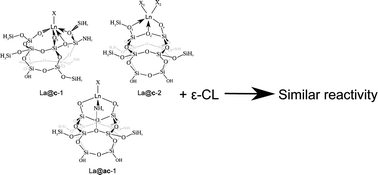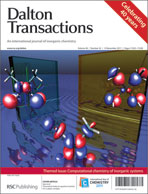DFT study of the Ring Opening Polymerization of ε-caprolactone by grafted lanthanide complexes: 1—Effect of the grafting mode on the reactivity of borohydride complexes†
Abstract
The influence of the grafting mode of a borohydride lanthanum complex on a silica surface on the energetic (kinetic and thermodynamic parameters) of the Ring Opening

- This article is part of the themed collection: Computational chemistry of inorganic systems

 Please wait while we load your content...
Please wait while we load your content...